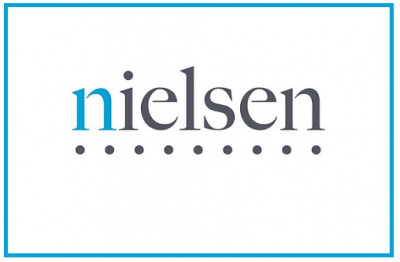Indian FMCG saw unprecendented degrowth of 17.9% in April-May: Nielsen
THE DISRUPTION STORY (Q2’20 - April to June 2020)
The novel coronavirus (COVID-19) pandemic has led to huge disruption in both supply chain and consumer behaviour in Q2’20. As India went through the two month long lockdown phase, there was a stark decline in macroeconomic factors and consumer confidence.
- Steep decline in consumer confidence Globally as well as in India, on account of personal finance and job concerns.
- Full year GDP Forecast becomes negative at -5%
- Significant decline in Industrial production post March’20
- Unemployment rates reaching all time high of 24% in April’20 and May’20
- Source: Secondary Data (Trading Economics, IMF Forecast);
- The Conference Board Consumer Confidence Index in association With Nielsen.
- While most key macro indicators were in the red in April and May, some green shoots were seen in June with decline in unemployment, inflation and slowing down of decline in Index of Industrial Production (IIP).
- Similar trend was reflected in the FMCG industry in the quarter where the industry witnessed an unprecedented decline of -17.1%, down from a 6.3% growth registered in the previous (Jan-Mar) quarter. In tune with macro indicators, FMCG industry also displayed early signs of
- revival with the unlock period in June, when the growth moved back to the positive side (4.5% versus previous year i.e. June ‘19).
Nielsen Retail Audit data was analysed to pull out some of the salient trends from the quarter that ended in June. Also, our teams have revised the industry growth outlook for 2020:
IN THE LOCKDOWN QUARTER, INDUSTRY FIGHTS BACK WITH JUNE UNLOCK
The FMCG slowdown which started from March, got amplified in April-May’20 when the industry declined by 28% as compared to the same period of 2019. This was due to massive disruptions in production and supply chain, and low consumer confidence as discussed in the earlier section.
Unlock 1.0 in June’20, saw a revival, although, with the industry clocking a growth of 4.5% versus year ago. The revival was aided by opening up of retail stores and consumers looking at resuming normal consumption levels across categories. The opening up of retail stores is evident from the fact that the average number of days of store closure dropped from 11-12 days in April-May to five days in June’20.
INDUSTRY REVIVAL IN BHARAT OUTPACES THAT IN INDIA
The pandemic was severe in Indian Metros and Urban centres as compared to the Rural areas. This was reflected in retail stores functioning - the number of days retail stores (dealing in FMCG products) in metropolitan cities were closed for 2X times that to the outlets in rural areas even in June. As a result, the industry sales continued to decline in bigger cities (>1 Lakh population including metros and Town Class 1) in June. The smaller towns and rural markets, however, had a strong bounce back in June, after two months of negative growth during the lockdown.
NORTH AND EAST DRIVING REVIVAL
Like the differential impact of the pandemic on consumption patterns in Urban and Rural India, there has been varying impact on the consumption across zones as well. Higher rural population and lower incidence of COVID cases in East and North zone is reflected in the FMCG industry also. These two zones saw a shift from negative industry growth of Apr-May to a high single digit growth in June. On the other hand, the West zone that has a relatively higher urban population and had higher severity of the pandemic continued to decline in June.
TRADITIONAL TRADE & E-COMMERCE BOUNCE BACK
All three channels of Traditional Trade, Modern Trade and E-Commerce were impacted in the quarter, on account of store closures, supply chain issues and disruptions in last mile delivery. As the situation improved in June, we saw that Traditional Trade and E-Commerce channels bounced back strongly.
‘NON FOODS’ SEES STRONG RECOVERY WITH UNLOCK
Consumers prioritized spending on essential foods during the locked down quarter. We saw an interesting trend in the non-Food categories. After sharper declines in Apr-May the segment registered a notable bounce back in June with Unlock 1.0. This recovery was particularly seen among Personal Care and Home Care categories.
As consumers were navigating the COVID impact, we witnessed clear changes in their product preferences as the quarter unfolded. There was a significant drop observed in sales of premium
segments across the category baskets in Apr-May, while mass or popular offerings gained salience. This behaviour seems to be reversing in June, with consumers uptrading to their original preferences.
E-COMMERCE ACCELERATES FURTHER, POST LOCKDOWN, WHILE TRADITIONAL TRADE GAINS BACK
The Traditional Trade channels had the highest impact in the quarter on account of store closures during the lockdown. Modern Trade, on the other hand, had a spike in sales towards the later part of March and early April when consumers used this channel for upstocking. However, subsequently there were issues on count of foot falls that impacted the channel sales. The third channel, E-Commerce that has been witnessing the fastest growth on a small base, faced challenges of supply chain and last mile delivery due to government regulations and movement restrictions in April that impacted last-mile deliveries badly.
The ground conditions altered the channel mix in a big way during the Apr-June quarter. The Traditional Trade (TT) channel lost in a big way to Organised Trade (Modern Trade and E-Commerce) channels during the lockdown. On entering the unlock phase, TT regained its share of trade and e-commerce also jumped back to a high growth zone. Modern Trade, meanwhile, struggled with continued restrictions and lower footfalls due to social distancing adherence.
Among product categories, while all baskets saw revival in June across the retail channels, a steep revival was witnessed in Personal Care categories and Staple Foods in the Traditional Trade and E-Commerce channels in June.
RURAL GREW 3X OF ALL INDIA IN JUNE’20
After witnessing slower growth compared to Urban in Q1’20, Rural markets led the industry revival in June with a double digit (12%) growth versus june of 2019. At an overall quarter level also, Rural markets were less impacted as compared to their Urban counterpart (11% decline for Rural vs 20% for Urban).
Various favourable macro-environment factors have helped in driving Rural revival in June’20.
Lower COVID incidence in rural areas leading to lesser disruption of economic activity including retail store opening.
Government dialing up on rural stimulus in the form of increased MNREGA allocation, 'Garib Kalyan Rojgar Abhiyan’, support to agriculture and upskilling programs for migrant workers that returned to their villages.
Normal and timely rainfall boosting villagers.
High net sown acreage for Kharif crops as compared to last year, also reflecting in an increase in fertilizer and tractor sales.
Reverse migration added to the rural labor and consumer base.
ECONOMIC ACTIVITIES AND REVERSE MIGRATION IMPACTED FMCG CONSUMPTION PATTERNS ACROSS INDIAN STATES
Indian states have been impacted differently depending upon the severity of COVID impact, lockdown restrictions and migration patterns.
States like Maharashtra, Gujarat, Delhi, AP that attract high numbers of migrant population, had a negative impact due to reverse migration of labour. This gave a positive boost to FMCG sales in states of Uttar Pradesh, Bihar, Rajasthan and Uttarakhand, where the local governments dialed up on employment efforts reflecting in unemployment data as well. Likewise, the states having higher urban population witnessed a negative impact on FMCG growth as the pandemic was more severe in bigger cities.
OUTLOOK FOR 2020
COVID-19 is an unprecedented event in the recent history of mankind, impacting economies and industries across the country. The bellwether FMCG industry, which was trying to revive from a difficult 2019, had a significant hit in the Apr-Jun quarter with a 17% decline in sales value as compared to the same quarter of 2019.
Severe and extended lockdowns, restrictions on manufacturing units and movement of people and goods, social distancing norms, store closures, etc has had a significant impact on Indian FMCG industry, so much so that the industry growth went to a negative zone in the first half of 2020 (6% decline in Jan-Jun period).
Keeping these unprecedented dynamics in the market, Nielsen has revised its outlook and is expecting the year to be in the flat growth range (-1% to 1%) for branded FMCG industry in India, as against a 5-6% growth projected earlier this year.
The key factors influencing the revised growth forecast are as follows:
Macro Economic Factors:
GDP grew at 3.1% in Jan-Mar quarter of 2020, at its lowest since 2003. The GDP growth outlook for the year is in the negative territory (IMF forecasts a -4.9%). Consumer Price Inflation (CPI) is in the highs of 6% though expected to ease in the second half of the year to sub 4% level by September. Index of Industrial Production (IIP) after hitting an unprecedented low (-57%) in April continued in the high negatives in May.
Unemployment rates hit a 4X of the normal range of 6-7% in April and May before inching down to 11% (still 2X of the normal) and job losses are projected to increase in the near future given the challenging situation and no near term relief from the pandemic.
Rural Dividend:
Covid Impact and Government policies: Rural India has been comparatively insulated from Covid-19 so far, however its spread is now reaching the hinterland. Having said that, we do expect an overall positive uptick due to reverse migration.
MNREGA wages are at an all time high and rural disbursement against the programme is more than 2X of same period last year.
Rainfall & Agriculture: The progress of the southwest monsoon so far has been normal, with well spread intensity unlike last year - floods so far are restricted to 2-3 states unlike 15 states that were impacted last year. The Meteorological Department has forecasted a normal monsoon this season across the country. Further, there is a 40-60% higher water availability in water reservoirs. All this has resulted in Net Sown Area coverage increase for Kharif crops from 154.5 lakh hectare in 2019 to 315.6 lakh hectare in 2020, till Jun 24. Expectation of a good Kharif crop on the backing of a good Rabi harvest in April, and increase in minimum support price (MSP) for crops from the government would all lead to a positive outlook for the agrarian sector in 2020.
Festivities:
Pseudo seasonality driven by festivities and coupled with a lower base of 2019 is expected to cause an uptick in consumption especially in Q4. This would further be amplified by the fact so far all forms of entertainment have been pushed / rescheduled. The lipstick effect would continue especially in Q4 2020. Food categories too are expected to see a higher growth due to this.
Covid and Lockdown Relaxation:
While India is expected to gradually recover from Covid given the sheer population, Unlock 3.0 is out. The relaxation is expected to fuel consumption and economic activity. While the social distancing norms and regulations for containment areas continue, the areas not within these zones will move towards the cliched “New Normal”.
















Share
Facebook
YouTube
Tweet
Twitter
LinkedIn